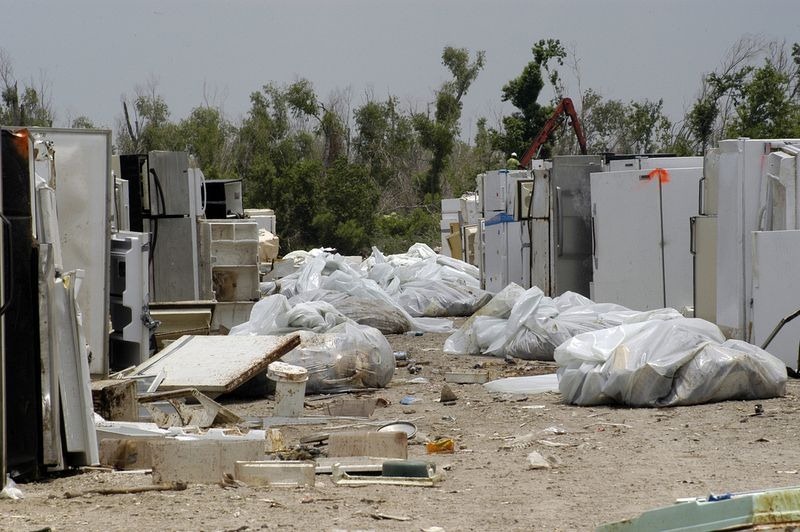Hurricane Katrina, that ravaged the Gulf Coast and the entire city of New Orleans in the summer of 2005, ruined a lot of household appliances but damaged refrigerators belonged to an entirely different realm of problems.
When Katrina forced people to evacuate their homes, a few residents emptied their refrigerators before they evacuated, but most of them left theirs with all the food inside. They didn’t know that they would lose power for weeks, or that they wouldn’t be able to return home until a month or more later. All this time the food sat in the stifling 90-degree heat inside the refrigerators and rotted. Vegetables and fruits, meat and fish had all turned into a disgusting slimy mess teeming with maggots.
People who returned and opened their refrigerators immediately regretted. The food had become so toxic that it melted plastic, corroded metal, and dissolved rubber refrigerator liners. The smell was unbearable. Word got out and many didn’t open their refrigerators at all. They sealed them shut with duct tape and pushed the box of horrors out of their homes and into the curb. Some people tried and found it impossible to fully clean their refrigerators. The smell just wouldn’t go. Eventually, refrigerators started to crop up in the streets like mushrooms after the rain, even in parts of the city that wasn’t flooded. An overwhelming smell of death and decay hung over the entire city.
The putrid task of disposing these machines fell upon the local government, who assigned a special crew for the job. These men were trained in the handling of hazardous materials and were armed with special equipment and hazmat suits. But the destruction throughout the region was so extensive that the clean-up operation took months to complete. Sitting there outside the homes, the abandoned refrigerators began to attract graffiti and soon became a platform for art and personal expression. As time dragged on some began to be decorated with festive Christmas ornaments and salutations. For months the spray-painted refrigerators became a ubiquitous symbol of post-Katrina New Orleans. People began photographing Katrina refrigerators, and organizing exhibitions featuring these photographs. Even books were written about them. That year at Halloween parties, Katrina refrigerators were a popular costume idea.
Eventually the refrigerators were hauled to a scrapyard to be recycled. As many as 150,000 refrigerators were dumped at the Gentilly Landfill by December 2005. By early 2006, the last of them were gone.
A "Bobcat" picks up dead domestic refrigerator and other debris. Photo credit
A “Bobcat” dumps a refrigerator on a landfill in New Orleans. Photo credit
Thousands of refrigerators lie on a landfill in 2006 waiting to be scrapped. Photo credit

Thousands of refrigerators lie on a landfill in 2006 waiting to be scrapped. Photo credit
Sources: Wikipedia / Karen Ashley / NOLA






















Comments
Post a Comment